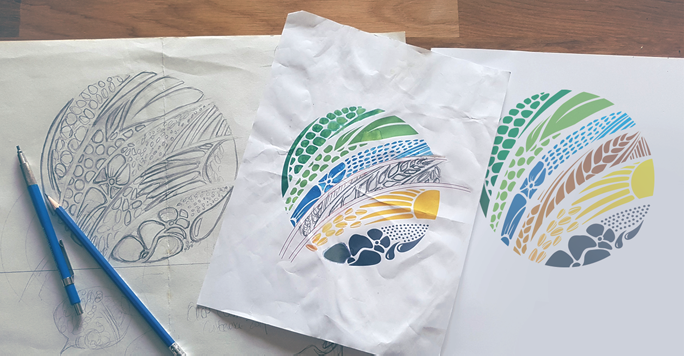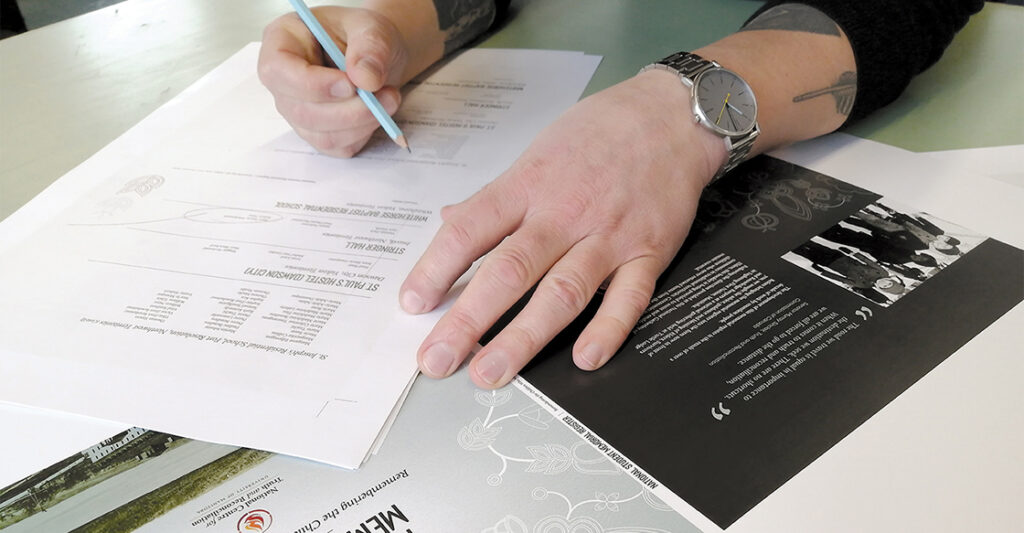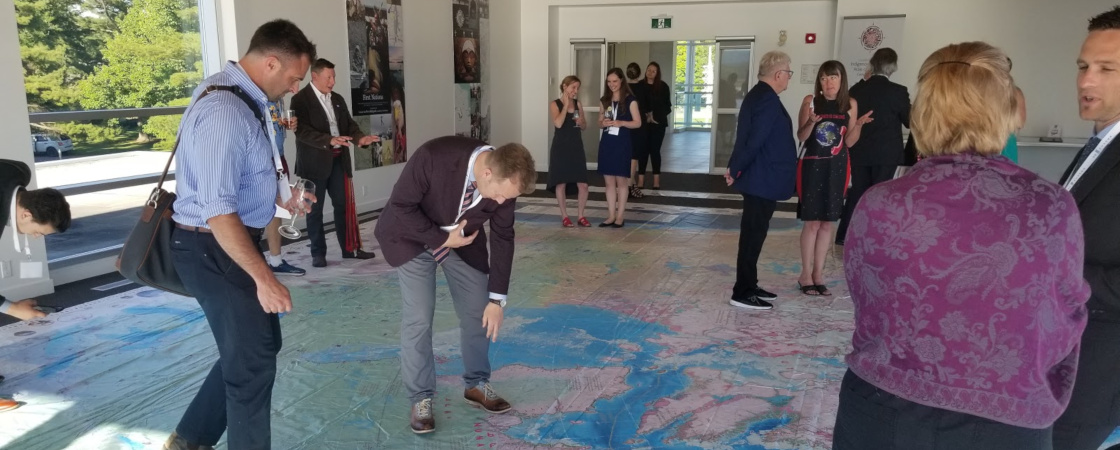About Our Process (aka, Listen, Research, Sketch, Repeat)

How we design is largely about how we work with people. We are artists, designers, programmers, marketing strategists and communicators – all our work is both creative and people-oriented.
We’ve built a reputation around being friendly and professional; we bring our individual, personable working styles to each project, and have built a firm that is approachable, trustworthy and accessible. We diligently apply our expertise to assess each organization’s goals, needs and potential issues, looking for areas for growth and solutions alongside creation of quality and custom designs.
As an Indigenous design firm, our approach also connects non-Indigenous and Indigenous clients and partners, by bringing Indigenous cultures to graphic design, marketing and communications. In this way, we like to say that our process starts and ends with listening: each client’s project is an honour to work on, and we take pride in taking the time to hear and represent people’s stories. This is an especially delicate task in Indigenous design, and our process helps us ensure it’s done thoughtfully, collaboratively and respectfully.
“The designer does not begin with some preconceived idea. Rather, the idea is the result of careful study and observation, and the design a product of that idea.”
~ Paul Rand, American art director and graphic designer
Listening & Input
Input is critical, listening even more so. There is always more to hear, more to learn. Listening and dialogue complement our artistic vision.
We listen and seek input from our clients, colleagues and community to ensure we understand the context and that our designs are respectful. We value finding new ways to include different ways of knowing, diverse perspectives and inclusive, meaningful elements.
Listening is important for any client we work with, and particularly our Indigenous partners. Our familiarity with many of the traditional stories helps; knowing how to approach Elders and Knowledge Keepers to hear the stories again and discuss their meaning is essential.
Elders and Knowledge Keepers close to Vincent Design are also valued members of our team. We take grateful counsel in their advice, stories and feelings towards Indigenous issues and topics. This dialogue helps inform design choices and storytelling through our visual medium, as well as our consulting and strategic work with clients.
For example, when we worked with the Canada Border Services Agency on design work for their Indigenous Training Framework and Strategy, consultation and input from Elders was key to delivering authentic design assets. They generously helped us select and feature traditional and ceremonial items for a custom clip art and photo library, as well as ensure our imagery respected the significance of each item.

Research & Pathfinding
Building a brand that resonates means identifying experiences and memories that can be linked to a concept. We spend a lot of time getting to know each client, their business, goals, stories and perspectives to find those links.
If you’ve worked with us before, you’d remember this stage. This level of detail and consideration helps us extract the right information and focus in on the right areas for the most effective designs. It provides a point of reference and framework that can be revisited and used for creating and developing any creative project or campaign.
Similarly, we like to start every project with a phone call or meeting (or these days, a video chat). We like checking in with our clients regularly, and we’re proud of still being known as a firm that has ‘real people in real time’ when and as needed.
“Inspiration can come from anywhere. We visit with clients over coffee, in their offices or communities, or meeting the people they serve. We sift through library archives, reports and books, photos and drawings, and pages and pages of online search results. We look at the details in architecture and surrounding landscapes and notice the subtle themes in clients’ art, crafts, heirlooms and decor. We sketch, consult and return to the drawing board to revise as needed.”
Our work on the Indigenous Peoples Atlas of Canada is a standout example of our process in action. We got to know the people on this project very well over many calls, meetings and brainstorming sessions. We devoted hours to browsing local museums and talking with curators and historians, examining and photographing exhibits and archival material, consulting with Elders and Knowledge Keepers, and reading and researching in libraries. The outcome of our collective efforts was a beautifully representative, culturally relevant and deeply meaningful design.
Sometimes, we also make pathfinding a part of our process with clients. This tool gives us a way to efficiently summarize our research and formalize a new or re-imagined marketing and design strategy. Each path is unique and ensures our design and services pair with an organization’s goals, needs and constraints. With a plan for the project development laid out, the client’s main decision points and next strategic directions are highlighted.

Brainstorming & Sketching
With a solid background and understanding of our clients and their needs grounding our work, we move on to conceptualizing our ideas and possible design directions.
At this stage of the process, we are considering everything from imagery and style to colour palette and font. Even the simplest logo comprises many graphic elements, and each one needs to complement the vision and design as a whole.
As we brainstorm, we’re thinking about the goals we want to help a client achieve as well as all the people we talked to in a meeting or on a call, and their history, experiences, possible preferences and styles. We also have to consider ourselves; what do we, as professional graphic designers and marketing specialists, want to see in a high-quality design?
With experience, patience and creativity, we work to find the breakthrough idea that moves a project forward. We ensure originality, clarity in the intended message, and unique designs that bring attention to brands, organizations and communities. We take great pride in our creative solutions and get excited about bringing ideas to reality.
Sometimes however, our best ideas happen when we’re not at work, but our creative minds are still churning – early sketches of some of our favourite logos were etched onto napkins when the inspiration struck.
Presentation & Feedback
We like to think that we know we’re at the end of a project when we’re back where we started: listening and engaging with our clients.
Part of presenting a design is conveying our passion for our work along with the rationale and decisions that guided us. But it’s also about paying careful attention to the initial reactions, impressions and feedback on our ideas.
This is not the place for artistic ego; as experienced artists and designers, we know that reviewing, refining and finalizing a design is all about two-way dialogue and ensuring our work checks every box on a client’s list.
Of course, we also have to admit we really enjoy hearing that the ideas we present are right on track, right out of the gate – like with the redesign of a logo for our long-time clients, Film Training Manitoba (FTM).
To learn more about our approach to honest, effective design, you can browse our portfolio, follow us on social media, and read more about our work as graphic and Indigenous designers.
If you’d like to talk to us, call or message us anytime – our team of graphic artists would love to work with you to create visually engaging materials that help your organization and brand stand out and stand the test of time.
